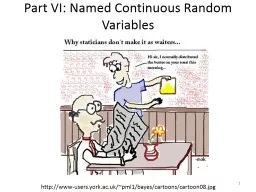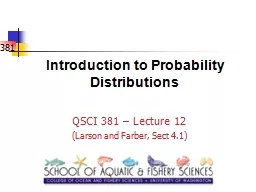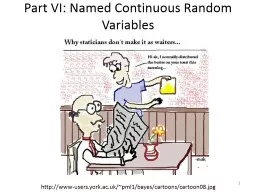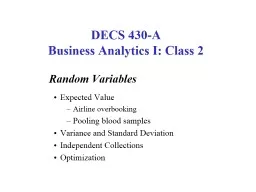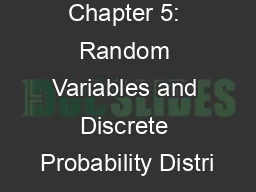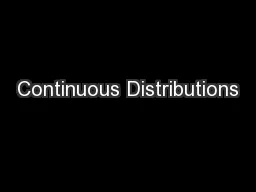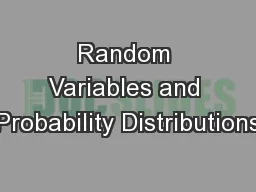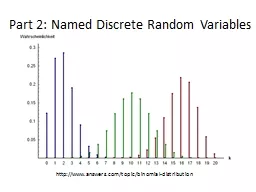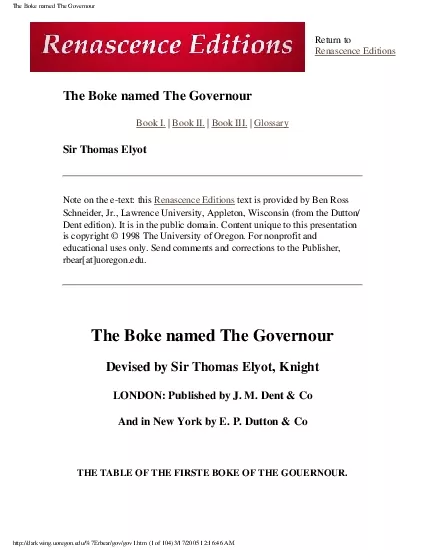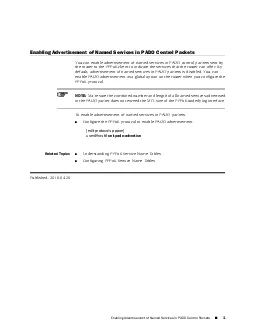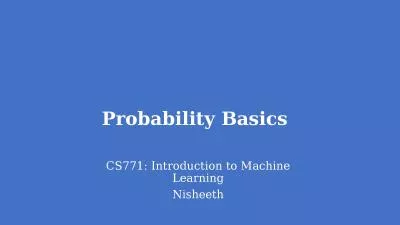PPT-Part VI: Named Continuous Random Variables
Author : liane-varnes | Published Date : 2017-06-03
httpwwwusersyorkacukpml1bayescartoonscartoon08jpg 1 Comparison of Named Distributions discrete continuous Bernoulli Binomial Geometric Negative Binomial Poisson
Presentation Embed Code
Download Presentation
Download Presentation The PPT/PDF document "Part VI: Named Continuous Random Variabl..." is the property of its rightful owner. Permission is granted to download and print the materials on this website for personal, non-commercial use only, and to display it on your personal computer provided you do not modify the materials and that you retain all copyright notices contained in the materials. By downloading content from our website, you accept the terms of this agreement.
Part VI: Named Continuous Random Variables: Transcript
Download Rules Of Document
"Part VI: Named Continuous Random Variables"The content belongs to its owner. You may download and print it for personal use, without modification, and keep all copyright notices. By downloading, you agree to these terms.
Related Documents

